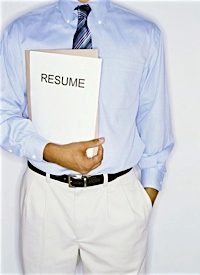
A closer look at the Department of Labor’s employment report earlier this month reveals that the real unemployment number is different from the “headline” number. Restated, the Bureau of Labor Statistics (BLS) should have concluded that unemployment is at least 9.1 percent, and most certainly much higher.
If the BLS adds the 9.3 million who are “involuntarily” employed part time because their hours were cut back or because they couldn’t find a full-time job, that brings the total to 23.3 million un- (or under) employed. Another 2.5 million persons were “marginally attached” to the labor force — those who were not working, but wanted to work and had tried to find work in the past year without success — which brings the total to 25.8 million. According to the BLS, the civilian work force is just over 154 million, so doing the math give a potentially more accurate number: 16.8 percent.
If those who have given up looking for work altogether were counted, that would add more than another nine million, according to John Williams at ShadowStats.com. That brings the unemployment number to 23 percent. This is confirmed by a recent Gallup poll that nearly one in every five Americans describe themselves as underemployed but it doesn’t count those who hold more than one job just to make ends meet.
And the number of those on disability has soared, taking them out of the workforce but not being reflected in any government accounting. Ten years ago there were five million people collecting federal disability payments. Today that number has increased to eight million. Those three million are not counted as unemployed.
Part of the statistical model of the BLS assumes a certain number of jobs created by new business startups even though those statistics aren’t known until sometime in the future. Using the so-called “birth/death” model, some 200,000 jobs were assumed to have been created last month. But this model is clearly flawed, as new businesses startups continue to decline as the great recession rolls on.
Finally, no allowance is made for individuals working below the poverty level (less than $10.50 an hour), which includes one in every five workers.
On NBC’s Meet the Press on Sunday, presidential candidate Ron Paul stated flatly that the unemployment rate was higher than announced by the Department of Labor:
I think the downturn in the economy occurred in the year 2000 … [and no new jobs have been created] yet we’ve had a 30-million increase in population. Just go out and talk to the people — unemployment in the true numbers [is] over 20 percent, so there’s been a depression.
Taking into account those without work, those seeking work but unable to find it, those working in positions for which they are over-qualified, those who have given up looking for work, and those barely scraping by at the poverty level, the “headline” rate of unemployment offered by the Department of Labor greatly understates unemployment by at least a factor of two and perhaps by as much as a factor of three. Unemployment and underemployment is pushing 25 percent and may go even higher as the economy moves into “another” recession (if the first one ever ended) and maybe even a depression.



